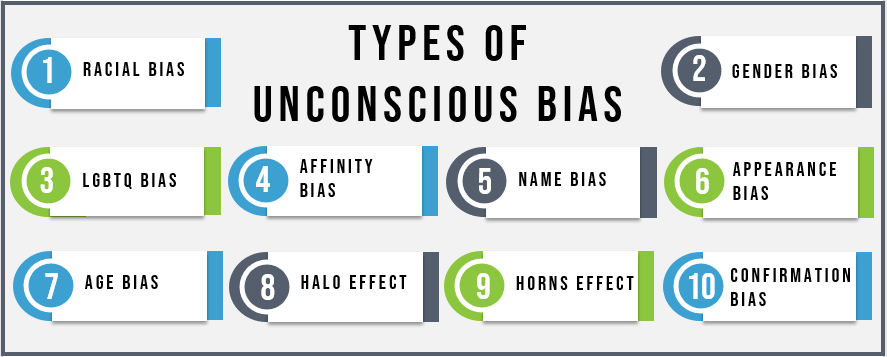By Meaghan Jansen, MSc, BSc, BA

Meaghan Jansen briefly reflects on how unconscious biases can affect various areas within the workplace.
Humans have a natural tendency to form opinions about others – often without complete or enough relevant information about them. As much as we strive to avoid biases, they have a way of sneaking into our thoughts and behaviours. Unconscious biases are rooted in stereotypes, media representations, or personal experiences. They are implicit beliefs, attitudes, and assumptions about something or someone that we’re not aware of, but that still influence our judgements and actions. According to Sigmund Freud, our unconscious thoughts have the greatest influence on human behaviour, so it’s extremely important to develop a better understanding of them and their impact and influence.
Often when we speak of biases, we focus on the negative. For instance, a bias against people of a certain gender or ethnic background. But unconscious biases can also be favourable. We may be more inclined to befriend someone who graduated from the same university as us or believe an employee is more knowledgeable simply because they are older than their peers.
There are various kinds of unconscious bias in the workplace that you may be guilty of without even realizing it. Download a summary of the main type of unconscious bias with descriptions and examples here.

There are various kinds of unconscious bias in the workplace that you may be guilty of without even realizing it.
Why leaders should care about unconscious bias in the workplace.
Each and every one of us brings our unconscious biases to work. It’s important to recognize that our beliefs and attitudes are reflected in our actions, and decision-making, and can impact our interactions and relationships with co-workers and customers. Our biases have power and can negatively affect employee experience, hinder teamwork, and sway organizational culture and well-being. Simply put, unconscious bias can sabotage team and company success. It can affect all areas of business including talent acquisition, retention, employee productivity, and engagement. It can also thwart efforts around diversity, equity, and inclusion, which can unknowingly shape an organization’s culture.
Research offers the figures to demonstrate the damage that unconscious bias can do. Consider this: Cortisol is a hormone created to help your body respond to stress. It can take three to four hours for your cortisol levels to return to normal after a stress response.1 Being on the receiving end of bias, can result in feeling discriminated against or uncomfortable, which creates stress. In this state, an employee is not able to perform their best and can become disengaged from their work. According to one study, employees at large companies who perceive bias are nearly three times as likely (20% vs 7%) to be disengaged at work.2
Innovation and creativity also take a hit. Employees who experience bias are 2.6 times more likely (34% to 13%) to withhold ideas and market solutions.2
In the United States, the cost of workplace bias is estimated at $64 billion each year including what’s involved in losing and replacing employees due to unfair practices and discrimination. Employees who experience bias are more than three times as likely (31% to 10%) to say that they’re planning to leave their current jobs within the year.2
How to address unconscious bias
When managing unconscious bias, self-awareness is key. It’s important to acknowledge that you have biases – we all do. Accepting this allows you to turn unconscious bias into conscious bias, which means you can slow down and investigate your beliefs and assumptions. Knowing your mental shortcuts (which is what biases really are) allows you to better recognize how they help or hinder your decision-making and your ability to work with and lead others.
Employees and managers alike can benefit from Unconscious Bias Training, which is based on helping people build self-awareness around their biases.
It’s also important to embrace diversity and be open to feedback that may challenge your assumptions. While it can be uncomfortable when our long-held beliefs are challenged, it is a valuable opportunity to learn and improve your ability to lead. Rather than become defensive, pay attention to your immediate reaction and shift your mindset to a place of curiosity and positive intent.
KEY TAKEAWAYS
- Unconscious or implicit biases are thoughts or feelings that you’re not aware of that influence our judgements. According to Sigmund Freud, these thoughts have the greatest influence on human behaviour.
- Your personal story creates your biases. They are innate or learned and are a direct result of personal experience and background.
- Unconscious bias can affect the workplace including relationships with co-workers, interactions with customers, employee performance, decision-making, and organizational culture and well-being.
- When managing unconscious bias, self-awareness is key. Know your mental shortcuts and how they hinder or help your decisions, your ability to work with others, and the culture of your workplace.
sources:
Need some more assistance?
Get your FREE N0-Obligation Strategy Session with Meaghan by emailing us today (info@ewsnetwork.com). Employee Wellness Solutions Network can help you create a healthier culture resulting in a more profitable and successful workplace. Our memberships give you access to services including corporate wellness specialists, trainers and health coaches to help you create the best strategy for your organization. To learn more about the memberships, visit Employee Wellness Solutions Network.
